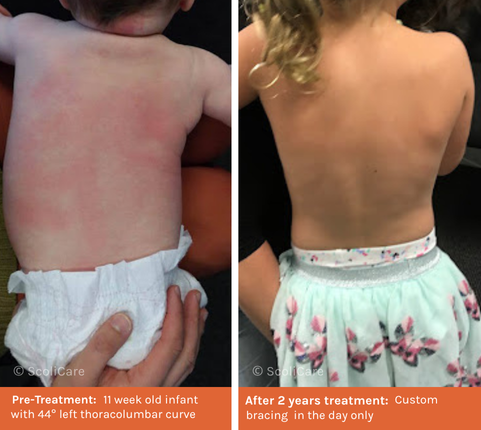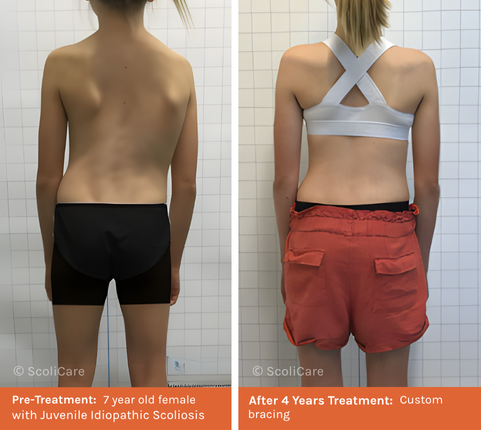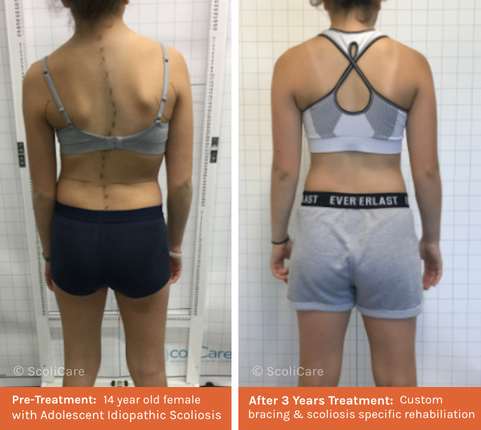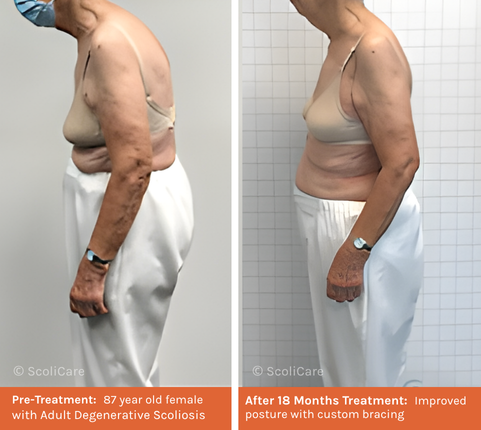Everything you need to know about scoliosis and treatment options
Scoliosis can affect individuals at any stage of life, with severity ranging widely between cases. While some people may have minimal symptoms, others may notice changes in posture or challenges with movement. Detecting scoliosis early is crucial for effective treatment and ongoing management. Dedicated scoliosis clinics can provide tailored care plans designed to meet each patient’s unique needs.

What a Scoliosis?

Scoliosis is often thought of as a condition that only affects teenagers. In fact, it can develop at any time. In adults, scoliosis can develop from a previously undiagnosed childhood condition or occur later in life due to degenerative changes in the spine. While some adults experience mild symptoms, others may see the curve worsen over time, potentially affecting mobility and quality of life. Early intervention with custom bracing and scoliosis specific rehabilitation can help manage symptoms and improve quality of life.
What is Infantile Scoliosis?

Infantile scoliosis occurs in children under the age of 4, usually presenting as a left-sided curve. While many cases may resolve naturally as the child grows, some can worsen over time, potentially leading to more serious problems. Early detection and intervention are key to preventing progression. Treatment options vary based on the severity of the curve and may include monitoring, casting, custom bracing, and in severe cases, surgery.
What is Adolescent Scoliosis?

What is Juvenile Scoliosis?

Juvenile scoliosis is a type of idiopathic scoliosis that affects children between the ages of 4 and 10 years of age. It is more common in girls, particularly between ages 6 and 10. The condition often worsens over time, with a higher risk of progression if not detected and treated early. In many cases, treatments such as custom bracing and scoliosis specific exercise rehabilitation are available as evidence-based treatment options for patients with Juvenile Scoliosis.
What is Infantile Scoliosis?

Infantile scoliosis occurs in children under the age of 4, usually presenting as a left-sided curve. While many cases may resolve naturally as the child grows, some can worsen over time, potentially leading to more serious problems. Early detection and intervention are key to preventing progression. Treatment options vary based on the severity of the curve and may include monitoring, casting, custom bracing, and in severe cases, surgery.
What is Scoliosis?

Scoliosis is a condition in which the spine curves sideways, forming a “C” or “S” shape. While it’s normal for the spine to curve slightly when viewed from the side, it should appear straight from the back. Common signs include uneven shoulders, hips, or waist, a tilted posture, back pain, or a noticeable curve in the spine.
It can appear at any stage of life – whether in babies, children, teenagers, or adults – and early diagnosis plays a key role in successful treatment. Regular scoliosis checks are important for all age groups to support early intervention and care.
What is Scoliosis?

Scoliosis is a condition in which the spine curves sideways, forming a “C” or “S” shape. While it’s normal for the spine to curve slightly when viewed from the side, it should appear straight from the back. Common signs include uneven shoulders, hips, or waist, a tilted posture, back pain, or a noticeable curve in the spine.
It can appear at any stage of life – whether in babies, children, teenagers, or adults – and early diagnosis plays a key role in successful treatment. Regular scoliosis checks are important for all age groups to support early intervention and care.
What is Scoliosis?

Scoliosis is a condition in which the spine curves sideways, forming a “C” or “S” shape. While it’s normal for the spine to curve slightly when viewed from the side, it should appear straight from the back. Common signs include uneven shoulders, hips, or waist, a tilted posture, back pain, or a noticeable curve in the spine.
It can appear at any stage of life – whether in babies, children, teenagers, or adults – and early diagnosis plays a key role in successful treatment. Regular scoliosis checks are important for all age groups to support early intervention and care.
The benefits of non-surgical treatment
Scoliosis treatment is highly individual and depends on factors such as the degree of spinal curvature, the patient’s age, and their daily activities or lifestyle. Non-surgical options, like scoliosis-specific exercises and custom bracing, may help improve posture, ease pain and slow or prevent further curve progression. In more severe cases, surgery may be considered. A dedicated scoliosis clinician can provide a comprehensive assessment and recommend a personalised treatment plan that best suits your needs.

FAQ’s
Here are some commonly asked questions around Scoliosis and available treatments:



